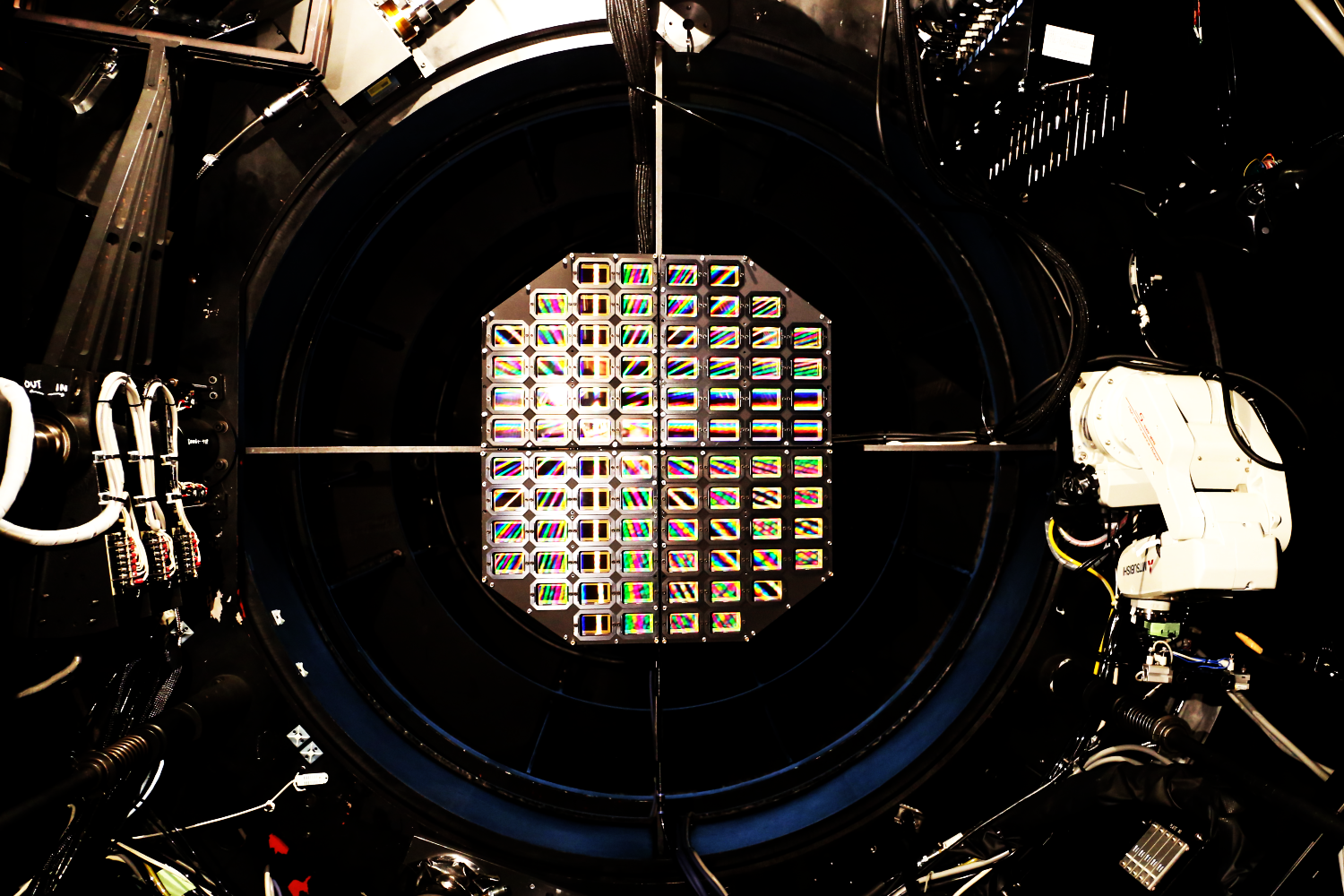The University of Tokyo Atacama Observatory (TAO) is located at the summit of Cerro Chajnantor, an outstanding mountain standing on the Atacama Desert in Chile. TAO is the world's highest observatory at an altitude of 5,640 m. The site is featured by fine weather and dry climate. TAO enjoys the world's best environment for astronomical observations. The operation of a 1-m miniTAO telescope has started since 2009, which made TAO a Guinness World Record holder as the highest astronomical observatory. The construction of the larger 6.5-m TAO telescope has been steadily in progress since 2012. The TAO telescope will be equipped with two flagship observational instruments: A near-infrared camera SWIMS, which observes at 0.9–2.5 μm, and a mid-infrared camera MIMIZUKU, which is in charge of observations at 2–38 μm. Infrared observations with these instruments will provide keys to elucidate long-standing questions in astronomy, such as the birth of galaxies and the origin of the solar system.

Tomo-e Gozen is an optical wide-field video observation system composed from a mosaic CMOS camera on 1.05-m Kiso Schmidt telescope, real-time data analysis software, and automated operation software. 84-chips of CMOS sensors enable us to obtain consecutive frames covering a field-of-view of 20 square degrees with a time resolution of 2 frames per second. In Tomo-e Gozen project, we promote studies on astronomical transients and fast-moving objects such as supernovae just after explosions, asteroids with possibility of collision to the Earth, electromagnetic counterparts of gravitational wave events, and variables with timescales shorter than one second by wide-field and high-cadence survey observations.

The present-day universe is full of galaxies exhibiting a wide range of diversity in their mass, morphology, and nuclear activity. It is one of the most important issues in the modern astronomy to understand the mechanism of formation and evolution of galaxies, and to understand the origin of their diversity. We are conducting research utilizing multi-wavelength data using ALMA, ASTE, Nobeyama, JCMT, LMT, JVLA, as well as HST, Spitzer, Subaru, and TAO, which will be operational soon, to exploit the characteristics of millimeter/sub-millimeter wave observations, such as the negative K-correction effect in dust emission, abundant molecular and atomic spectral lines, the Sunyaev-Zel'dovich effect, and so on. Specifically, our studies include deep surveys of distant galaxies using ALMA, properties of galaxies hosting transient objects such as Gamma-ray bursts and superluminous supernovae, interstellar medium and dynamics of spiral galaxies, molecular chemical compositions of the diffuse interstellar medium, interactions between supermassive blackholes and host galaxies, and high-redshift star-forming galaxies magnified by a gravitational lens. Furthermore, we are also promoting the development of observing instruments and technologies, which includes on-chip ultra-wideband spectrograph DESHIMA using superconducting direct detectors, 2-mm band heterodyne receiver system B4R, millimeter/sub-millimeter wave multicolor camera and related technologies, in collaboration with domestic and oversea research institutes.

Some stars make huge explosions at the end of their lives, which are called supernovae. Observing supernovae has made contributions to solve a variety of astrophysical questions, such as expansion history of the Universe. By investigating supernovae immediately after the explosions, characteristics of the parent stars can be derived. We discover early supernovae and investigate their brightness variation using wide-field cameras mounted on the 1.05-m Kiso Schmidt telescope and the Subaru Telescope.

Stars with B-spectral types and emission lines are called _Be stars_, which are distinctive for showing Hydrogen emission lines. They have been investigated chiefly using the Balmar series, hydrogen emission lines in optical wavelengths. The near-infrared camera mounted on the 1-m miniTAO telescope brought us the world first detection of the Paschen-α emission line at 1.875 µm from Be stars in a star cluster, NGC 330, in the Small Magellanic Cloud. We discovered new Be stars as well as known ones. By observing previously unavailable emission lines, investigation of the Be stars, which still remain enigmatic, will be advanced.

Massive stars which are more than 10 times heavier than the sun will expel tremendous energy in their relatively short life times. A variety of elements, part of which are indispensable to form terrestrial lives, are synthesized inside them. At the end of their lives, the synthesized elements are ejected into the interstellar space along with supernovae. Thus, the massive stars have large impact on the evolution of the Universe. Since final phases of the massive stars are short-lived, they are useful to estimate the ages of the star clusters they reside in. Most massive stars are heavily obscured by dust and molecular clouds. To discover the massive stars and investigate their surroundings, we have carried out observations in the infrared.

How far does our galaxy reach? The farthest edges of the galaxy, which remains hitherto-untouched, have been steadily elucidated by wide-field surveys with small telescopes as well as intensive observations with large telescopes. Investigation of the edges may lead to the understanding how galaxies are formed. By exploring the edges in optical and infrared wavelengths, which are the most powerful to reveal the fundamental structure of the galaxy, we are trying to get to the bottom of the galaxy formation.
